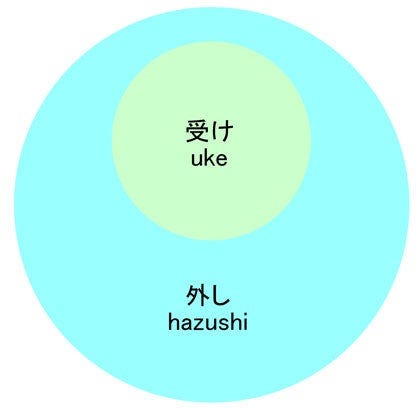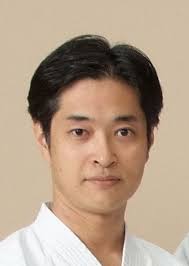Motobu Chōki uses the expression “uke hazusu (受け外す, literally, receive and remove)” in his books, where today we say “ukeru (receive).” In the commentary on “tsuki-uke (punch-receive),” he also refers to it as “uchi hazusu (hit and remove). Neither is common in modern karate terms.

By the way, is this word “hazusu” or its noun form “hazushi” unique to Motobu Chōki? In fact, Itosu Ankō also uses this word in his “Ten Precepts of Karate.”
The kata of karate should be practiced a lot, and the meaning of each movement should be heard and confirmed. Also, each movement should be practiced to confirm how it would be used in an actual fight. There are also the techniques of iri (entering), uke (receiving), hazushi (removing), and tuiti (joint lock and throw techniques), which are often taught orally because they are secret.
The word “hazusu” has many meanings, especially as it relates to martial arts, including the following:
6. Avoid those of the opponent. dodge. “To dodge (remove, sidestep, avoid) the attack,” “to deftly evade a question,” and “to miss the timing of the slow ball.”
7. To deflect the aim. “to miss the course,” “to miss the target.”
Source: digital daijisen
In other words, “hazusu” not only means to “receive” an enemy attack but also to “avoid” or “dodge” it. It is also used to “deflect” the trajectory of the enemy’s attack. Therefore, the relationship between “uke” and “hazushi” can be illustrated as follows.

The term “uke” in karate refers to techniques such as age-uke, yoko-uke, and gedan-barai in a narrow sense. However, “hazushi” has the following meanings other than the narrowly defined “uke” as such.
- Change the direction of the body (hanmi, ma-hanmni).
- Step out (avoid, dodge).
- Change the posture (bend, crouch).
- tsuki-uke (deflecting the trajectory of the enemy’s attack).
For example, Passai has a posture with a motion of leaning and thrusting, and Kūsankū has a crouching motion. It can be said that “irimi” and “tai sabaki”, which I introduced in the previous article, are also encompassed by this word “hazushi”.
There was a concept of “hazushi” in old-style karate, but in the modern era, it was diluted and the techniques of irimi and tai sabaki may have faded out.
The original Japanese article was posted on May 3, 2020 on Ameblo, and the English translation was posted on May 4, 2020.
Written by:

Thank you for reading my story. If you would like, please follow me.
Shihan, Motobu Kenpō 7th dan, Motobu Udundī 7th dan. Discusses the history of karate and martial arts, and introduces Japanese culture and history.
